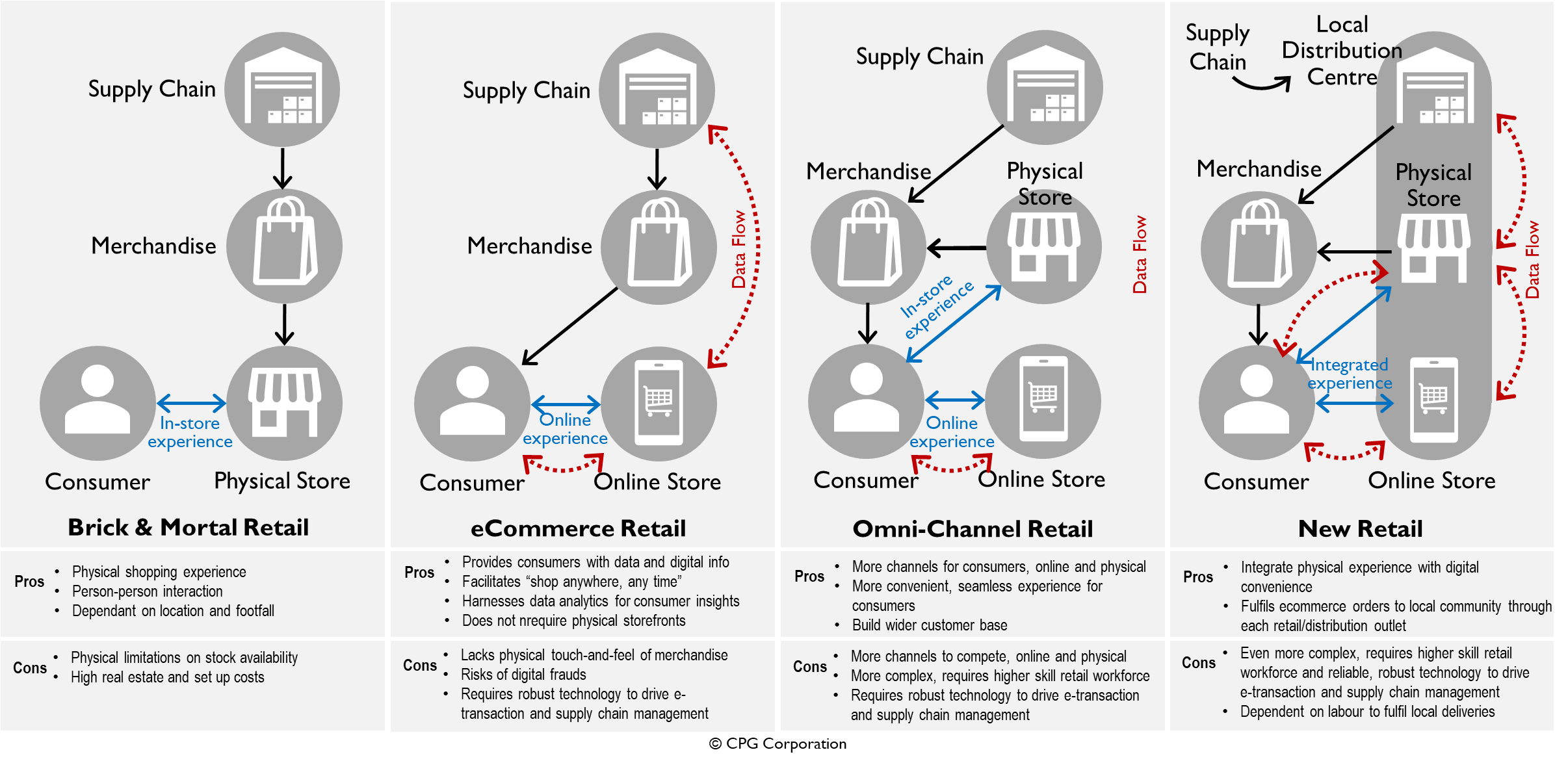Retail & Community Services in the New Normal (II): Future Retail Trends

In the previous blog post, we examined the underlying structural shifts caused by endemic living. In this second blog post, let’s discuss how some of the new trends will shape the future transformations of retail and community services.
Repurposing Traditional Businesses and Commercial Districts
While businesses and services pivoted to embrace digitalisation, the need for physical connectivity is not going away. The intangible need for face-to-face interactions is part of human nature. In addition, there will always be a need to access, examine, and use physical products, specialised equipment, tools, or processes that are only available on the premise.
Mobility reports have shown that while visitorship to retail, services, public places and workplaces decreased, it did not cease altogether. It does appear to drive three future trends. First, retail and services that had primarily depended on footfall will have to pivot towards e-commerce to compensate for the reduction in footfall. The endemic nature of COVID-19 may result in periodic, small outbreaks that require some form of social restriction measures, reinforcing the need for business resilience and continuity through e-commerce and digital processes.
Placed-Based Experience
The next trend which will differentiate from increasingly commodified e-commerce will be that place-based retail and services will focus on enhancing immersive, physical experiences that cannot be satisfied through a computer screen or tablet. A counter-trend to e-commerce appears to be emerging: a shift towards community and experience-based activities. Fundamentally, people are social beings with psychological needs. Beyond buying things, people want to be part of a community, and this is how physical retail transformation is taking place to stay relevant.
In recent years, one of the emerging strategies used by large retail outlets to generate a sense of community was to mix retail with experience elements, such as the HSBC Rain Vortex, Canopy Park, and Hedge Maze at Jewel Changi Airport, and lifestyle features such as a fitness centre, swimming pool, indoor cycling track at Funan DigitaLife Mall. Other than essential factors such as location and accessibility, families or friends tend to choose places to share memories and enjoy activities together. Another growing trend is a mixed-use development, where the diversity of live-work-play builds up a local community base that creates a vibe that attracts other customers.
More Mixed-Use and Local Communities
The third trend will be the development of resilient, local residential communities in traditional CBDs and business parks. The increased demand for a 15-minute lifestyle radius similar to that of the Resilient Communities (see previous blogpost) will drive the demand for downtown living. With reduced demand for office, retail and commerce spaces, some real estates will be re-purposed to residential options. CBDs and business parks will no longer be ghost towns on weekends if this comes to fruition. Instead, there will always be a local community that walks to their workplaces or go about their activities within the vicinity. From an urban sustainability perspective, that could be a positive development, as new services, ground-up initiatives, and local culture will emerge, enhancing downtown areas with a more enriched spirit of the place.
CYBER-PHYSICAL INTEGRATION IN RETAIL & SERVICES
The COVID-19 pandemic accelerated the development of e-commerce, with omnichannel retailing becoming the order of the day. How could the place-based experience keep pace, integrate with, and leverage digital retail?

New Retail
Coined by Alibaba in 2017, the term 'New Retail' is a sophisticated form of an Omnichannel experience that integrates the retail experience by seamlessly blending stores, data, online, and logistics. The ubiquitous nature of smartphone usage is essential to the New Retail movement. Once smartphones become an integral part of consumers' lives, New Retail is ready to connect customers through physical and spatial store experiences, achieved by obtaining aggregate information through digital channels and utilising technology such as location sensors and QR code scan, fulfilment logistics, and home delivery.
An interesting case study of New Retail is Freshippo. This novel supermarket chain has been rapidly expanding in China with physical stores for customers to physically explore, touch, and be inspired by food and groceries. Consumers can also visit the store’s café, browse the deli, have food cooked for them ready to eat, including fresh seafood.
To complete the Omnichannel experience, a customer may go in-store, pick the groceries, pay and go traditionally. He may choose to browse the store, order the groceries, and deliver them home. He may also purchase online and go in-store to collect. Or, he may buy online and have the groceries delivered the typical e-commerce way.
Customers have information at their fingertips with products that can be scanned in-store to reveal information on logistics and usage. The information customers are used to searching on the internet is seamlessly connected with the merchandise and groceries, augmenting the in-store experience. Payments can be made via the e-payment app or facial recognition at selected stores.
Planning & Designing Retail & Services in the New Normal
In-store experiences provide tactile, immersive experiences that online retailers cannot offer, as demonstrated by the popularity of New Retail. Under such a strategy, physical stores are not merely outlets aiming for high footfall but experience centres where products or services may be examined, experienced, queried, or exchanged. All transactions are done through contactless, online platforms, anytime and anywhere.
The ease of commerce will be supported by technology-enabled business processes that are pandemic resilient, integrating business continuity plans, safe management, automation and robotics to optimise operations and minimise transmission risks. Ultimately, the end goal is to enhance customer experiences through digital communication channels, in-store/online events while community building and engagement.
One major challenge in the highly specialised world is that the diverse expertise required to resolve the highly complex value networks and workflow of New Retail is highly segmented. Thus, the need for design integrators or lead designers skilled in the integrative approach has never been greater. Integrative design is a comprehensive holistic approach to design which brings together expertise that conventionally may be separate, e.g. IoT and spatial design. The emergence of design thinking in the business world testifies to such needs. At CPG, this is the next frontier where we aim to integrate our multidisciplinary built environment expertise with other fields of technological advancements, including data analytics, business modelling, and systems integration, through our bespoke digital master planning approach.
This blog post is the second part of a two-part series discussing retail environment trends in the new normal.
This article was authored by:
 | Ar. Tan Shao Yen Group Chief Innovation Officer |



